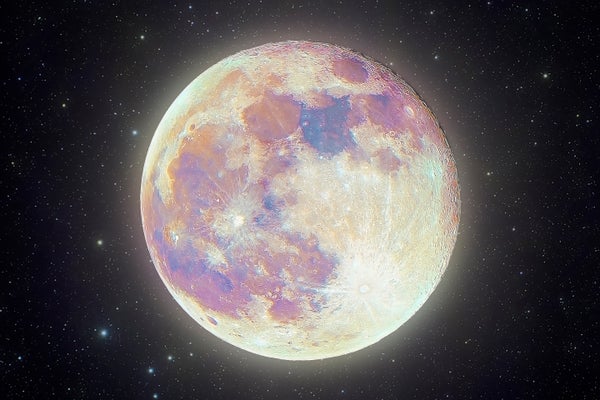Ancient Moon Melt Event May Explain 150-Million-Year Gap in Age Estimates
December 20, 20242 min readAncient Moon Melt Event May Explain 150-Million-Year Gap in Age EstimatesThe moon may have melted 4.35 billion years agoexplaining a lunar age mysteryBy Payal Dhar edited by Sarah Lewin Frasier Javier Zayas Photography/Getty ImagesThe moon is Earths closest neighbor in space and the only extraterrestrial body humans have visited. Yet scientists are still unsure exactly when a Mars-size meteorite slammed into early Earth, causing our natural satellite to form from the debris. Lunar rock samples suggest the event happened 4.35 billion years ago, but planet formation models and fragments of zircon from the moons surface put it at 4.51 billion years ago.A new study published on December 18 in Nature offers a way to explain that 150-million-year gap. Computer modeling and analysis of previous research suggests the 4.35-billion-year-old rock samples may not date back to the moons formation but instead a later event in the moons history in which it temporarily heated up, causing its surface to melt and crystallize.The moon is slowly moving away from Earth, so its orbit isnt circular. As it moves, it is squeezed and stretched by Earths gravity, resulting in what is known as tidal heatingand one of these heating events likely happened 4.35 billion years ago. This early moon would have looked like Jupiters moon Io, says the new studys lead author Francis Nimmo, a planetary scientist at the University of California Santa Cruz. It would have had volcanoes all over its surface, he says. This event would have also erased lunar impact basins caused by meteorite strikes, which researchers use to estimate age as well.On supporting science journalismIf you're enjoying this article, consider supporting our award-winning journalism by subscribing. By purchasing a subscription you are helping to ensure the future of impactful stories about the discoveries and ideas shaping our world today.This difference of 150 million years matters a lot to scientists, Nimmo says, especially for learning more about the early Earth. The moon is moving away from the Earth, and the rate at which that happens depends on what the Earth was like, he says. Was it solid? Was it liquid? Did it have an ocean? Did it have an atmosphere? For instance, really early Earth likely didnt have an oceanor it would have pushed the moon away too fast. The moons formation time is crucial to these calculations, and more complex models of tidal heating and the mineralogy involved could help refine our view in the future.No previous study has synthesized all the available evidence comprehensively, says Yoshinori Miyazaki, a geophysicist at the California Institute of Technology, who wasnt involved with the study. This paper provides a better view in resolving the discrepancies between different age estimates.Current hypotheses for when the Earth and moon formed, which put the date at anywhere from 30 million to 150 million years after the suns birth, suggest vastly different scenarios for planet formation. Resolving these uncertainties is essential for constructing a consistent picture of solar system history, Miyazaki says.


